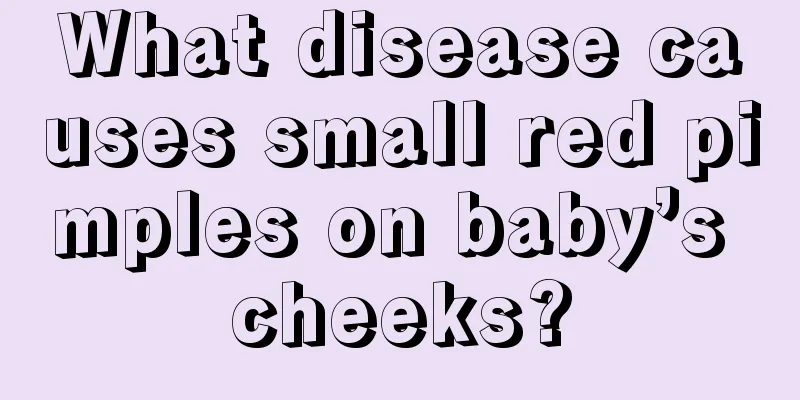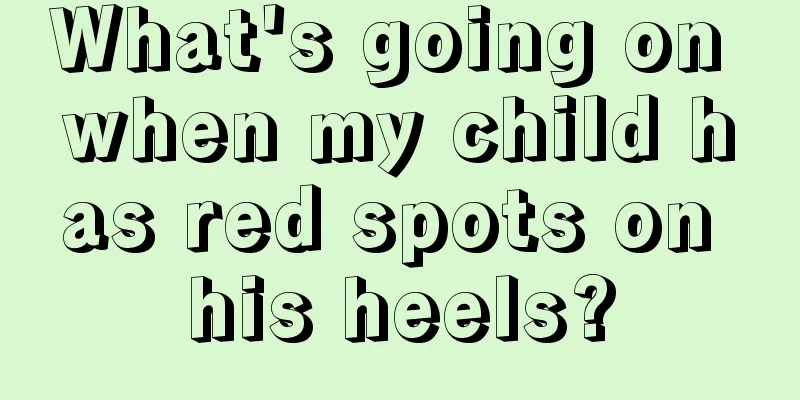What are the clinical manifestations of herpetic pharyngitis in babies?

|
The little life in every family is a treasure, especially now that many families only have one child, which makes the child even more precious to them. Children are physically fragile and are very susceptible to illness. Baby herpetic pharyngitis is one of them. What are the clinical manifestations of baby herpetic pharyngitis? This is what everyone wants to know. Let me give you a brief introduction below. What are the clinical manifestations of herpetic pharyngitis in babies? Herpangina in children is a special type of upper respiratory tract infection caused by Coxsackie group A virus. It often occurs in summer and autumn. The onset is acute, and the clinical manifestations include high fever, sore throat, drooling, anorexia, vomiting, etc. Physical examination may reveal congestion in the pharynx. Several to dozens of grayish-white blisters measuring 2 to 4 mm in size may be seen on the mucosa of the pharyngeal palate arch, soft palate, and uvula, surrounded by a red halo. They will break down after 1 to 2 days to form small ulcers. Herpes may also occur in other parts of the oral cavity. The course of the disease is about 1 week. The disease has an epidemic trend and is common in infants and young children, especially in summer and autumn. 1. Symptoms The onset is acute, with symptoms such as high fever, sore throat, irritability, drooling, anorexia, vomiting, general malaise and convulsions. If this disease occurs alone, there are often no systemic symptoms. Infants and young children often cry and make noise during feedings and are unwilling to eat. 2. Physical signs Physical examination may reveal congestion in the pharynx. Several to dozens of grayish-white blisters measuring 2 to 4 mm in size may be seen on the mucosa of the pharyngeal palate arch, soft palate, and uvula. They are surrounded by red halos and rupture after 1 to 2 days to form small ulcers covered with a light yellow or white pseudomembrane. Herpes can also occur in other areas of the mouth. There may be submandibular lymphadenopathy with tenderness. The course of the disease is about 1 week. The above is an introduction to the clinical manifestations of herpetic pharyngitis in babies. I hope it can help everyone. For the health of children, parents must pay attention once the child has a health problem, because often a small problem, if not paid attention to, can cause great harm to the child's body. Here I would like to remind everyone to take good care of your children’s health. |
<<: What is the cause of vulvitis in young girls?
>>: What are the factors that affect baby's separation anxiety?
Recommend
Why does the baby not want to take the nipple?
Some parents will find that their babies don'...
What causes foot pain in children when sleeping at night?
Sleep is very important for children. It is the b...
What are the symptoms of precocious puberty in boys?
Many parents think that precocious puberty is a d...
Where should I massage when my child coughs and has phlegm?
It is common for children to cough and have phleg...
How many times a day is normal for a six month old baby to poop?
We need to eliminate waste from our bodies throug...
Can babies switch to milk powder?
Many mothers do not have enough milk after giving...
Why do babies get diarrhea after eating fish and what should they eat to relieve it?
Some mothers will come to ask, saying that they w...
Which sleeping position is best for a newborn?
The sleeping position of newborns is also a conce...
The child is sleepy and has a stomachache and a pale face. What's going on?
The physical fitness of children in their early c...
Which calcium tablet is good for children?
With the development of today's life, many as...
What is the reason why children lose their temper?
Children are the hope of a family's next gene...
What can’t babies eat if they have dysentery? This knowledge must be understood
Babies are prone to dysentery. It is not a seriou...
What are the symptoms of poor spleen and stomach in children?
Parents need to pay attention to their children&#...
Three-year-old baby's lips turn purple
When a baby is sick, his lips may turn purple eas...
What causes separation anxiety in children?
The main reason for separation anxiety in young c...









